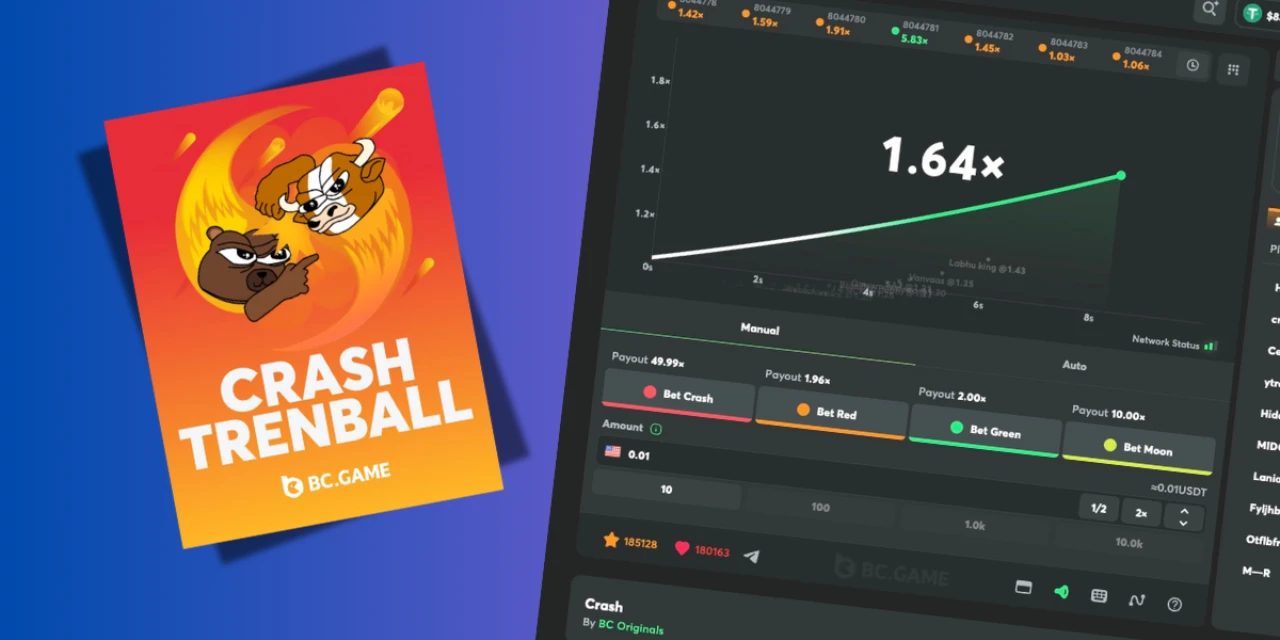
What Is the Best Plinko Strategy? I Tested and Found Out
The allure of Plinko lies in its simplicity and luck-based gameplay. However, like any casino game, Plinko fans are always on the lookout for strategies to tilt the odds in their favor.
I tested all the top “winning” Plinko strategies to find out which ones hold up in real-world play, and which are just myths.
Stay tuned to find out!
Popular Plinko Strategies: At a Glance
Here’s a summary of some of the strategies I tried at the top crypto casinos that have the Plinko game, and whether or not they were effective in my tests.
| Plinko Strategy | Effective? |
|---|---|
| High/16 | ❌ |
| Martingale | ❌ |
| Anti-Martingale | ❌ |
| Bankroll Management | ✅ |
| D’Alembert | ❌ |
| Low-Risk | ✅ |
Now that you’ve seen what’s to come, let’s get into the nitty-gritty details of each Plinko strategy:
The High/16 Strategy
Quite possibly the most popular Plinko strategy, the high/16 method involves setting the risk level to high, choosing the maximum number of rows (usually 16) and releasing multiple balls / spamming the ‘bet’ button.
The goal here is to play with the highest potential reward values.
Of course, the biggest risk means the biggest rewards… until your luck runs out. As one Reddit user puts it:

Setting the risk level to the maximum notably increases the game’s volatility. This means that while the potential rewards are higher, the likelihood of losing your bet also rises.
Dropping multiple balls at once or spamming the ‘bet’ button also means you’ll burn through your bankroll at a steady rate. This is exactly what happened to me when I tested this theory on Stake’s in-house Plinko game.
High/16 is probably considered the best Stake plinko strategy at the moment, but I didn’t find this to be the case.
While I saw some initial return in the beginning, I quickly lost the majority of my profits. The house edge, though tiny at 1%, really comes into play when volatility is at an all-time high.
So, in conclusion, while you might see some luck using this strategy (and score a huge x1,000 multiplier in the process if the Plinko odds are in your favor), long-term success is never guaranteed.
The Martingale Strategy
The Martingale strategy, a classic in gambling, suggests doubling your bet after each loss.
The premise is that a win will recover all previous losses plus a profit equal to the original bet.
Let’s look at an example, using my own experience testing BC.Game’s original Plinko game:
- I started with a $1 bet and lost.
- I doubled my original bet by wagering $2, and lost again.
- I then bet $4, hit a 3.0x multiplier, and won $12, making a net profit of $4.
I’m sure you don’t need me to tell you what’s wrong with this strategy! But I will, in any case.
The Martingale becomes an issue when the bet size balloons out of control. Eventually, you could lose enough that a maximum bet could exceed the game’s limits (maybe not BC.Game’s Plinko, with a maximum bet of 16,000 USDT, but other Plinko games for sure).
This strategy’s success hinges on the idea that betting more and more after losing will ensure returns. However, there is no way to predict a win/loss pattern in Plinko, or any RNG-based casino game.
Also, continuous losing streaks can create a lot of pressure, leading to an unpleasant playing experience.
The Anti-Martingale Strategy
The Anti-Martingale, or Reverse Martingale, doubles the bet after a win instead of a loss.
This strategy capitalizes on winning streaks while limiting losses on losing streaks.
Off the bat, it’s much more attractive than the Martingale (especially where responsible gambling is concerned), as it encourages betting more when you win and less when you lose.
I tested the Anti-Martingale on Plinko by Spribe.
Here’s an example of how the strategy works:
- I started with a $0.30 bet and chose green.
- I landed a 3.2x multiplier and won $0.96.
- I doubled my bet to $0.60 and lost.
- I reset my bet to $0.30 and started again.
While I saw a few wins, I didn’t make a profit in the long run. The Anti-Martingale relies on winning streaks (which are never guaranteed) and a single loss after a juicy win can quickly wipe out all of your gains.
I also found that managing my timing and bet amounts required a level of precision and concentration that was difficult to maintain.
Bankroll Management
Bankroll management is one of the only effective Plinko strategies. Fortunately, it’s also one of the simplest!
Bankroll management involves setting a budget and controlling your bets to avoid burning through your bankroll.
Here’s how you’d use this strategy:
- Before you begin your Plinko session, set a strict betting budget.
- Now, determine how many bets you want to make during your session.
- Divide your budget by the number of bets you want to make, and you’ll have your ideal wager amount.
- Begin wagering, and be sure to stop as soon as you’ve hit your budget mark.
Of course, this is more of a money-saving technique than a “winning” strategy (which we know don’t really exist, anyways).
If you want to get a bit more technical, you can use the popular Kelly Criterion formula: f=bp−qbf = \frac{bp – q}{b}f=bbp−q where:
- fff = fraction of your bankroll to bet
- bbb = decimal odds
- ppp = probability of winning
- qqq = probability of losing (1 – p)
For example, if you have a 60% chance of winning (p = 0.60) with a multiplier of 2x, your next bet is 20% of your bankroll.
Overall, bankroll management isn’t the most exciting strategy, but it’s one of the few that will mitigate your losses and extend your gameplay. We’ve got a dedicated casino bankroll management guide, if you’re hungry for more details.
The D’Alembert System
The D’Alembert system adjusts bets incrementally, increasing by one unit after a loss and decreasing by one unit after a win.
The D’Alembert is a relatively balanced approach, aiming to minimize losses and stabilize bets.
I tried this technique on BetFury’s high-RTP, exclusive Plinko title.
Here’s how it went:
- I started with a $1 bet on medium risk with 12 rows.
- I lost the first bet. Then, I increased my wager by one unit to make $2.
- I landed a 2x multiplier and won $4.
- I dropped my next bet to $3, and so on.
Overall, I made a small profit using this strategy in the beginning. Of course, my risk was limited because I started with such small bets.
Unfortunately, because bet size adjustments are smaller, the opportunity for substantial wins is limited. Prolonged losing streaks can also result in larger cumulative losses, especially if the initial bet size is too long.
So, while this strategy is more viable than the Martingale or Anti-Martingale, for example, it cannot guarantee big or long term wins.
Low-Risk Strategy
More similar to bankroll management, this strategy involves hitting the ‘low’ risk button and making smaller bets.
The strategy focuses on minimizing losses and providing a steader (though smaller) stream of wins.
By setting the risk level to low, payouts are more modest, but the likelihood of winning is higher. This reduces the game’s volatility and makes it less likely for you to experience long losing streaks.
Even so, you won’t make any big wins. I found this out by testing this strategy on BC.Game’s in-house Plinko game.
I made about 200 bets in USDT, each valuing $0.10, and I came away with $4 a profit. I’d argue that a profit is a profit, but some high rollers may disagree here.
In any case, my test proved that this is theoretically one of the best Plinko strategies.
Why Most Plinko Strategies Don’t Work
Like most casino games, Plinko is inherently random. Each round’s outcome is independent of previous results.
Many players fall victim to the gambler’s fallacy (the belief that past outcomes influence future results) which is what fuels the hunt to find the best Plinko strategies.
However:
- Each round of Plinko is independent and random.
- Strategies relying on previous outcomes are flawed.
- Doubling bets or playing at high volatility without an infinite bankroll is impractical.
Playing it safe seems to be the only way to minimize losses, and it’s always down to luck. I actually come to the same conclusion in my Crash gambling strategies guide, too.
Final Thoughts
Phew, you made it!
By now, you know that the only viable Plinko strategies are bankroll management and playing at low risk. It’s all about controlling your bets and maintaining a healthy bankroll balance.
Of course, if you’re a high roller with a hefty bankroll, the high/16 strategy may be your best bet, especially if you feel like Lady Luck’s on your side.












